New Arizona mines unearth new conflicts: Resist climate change or protect fragile landscapes?
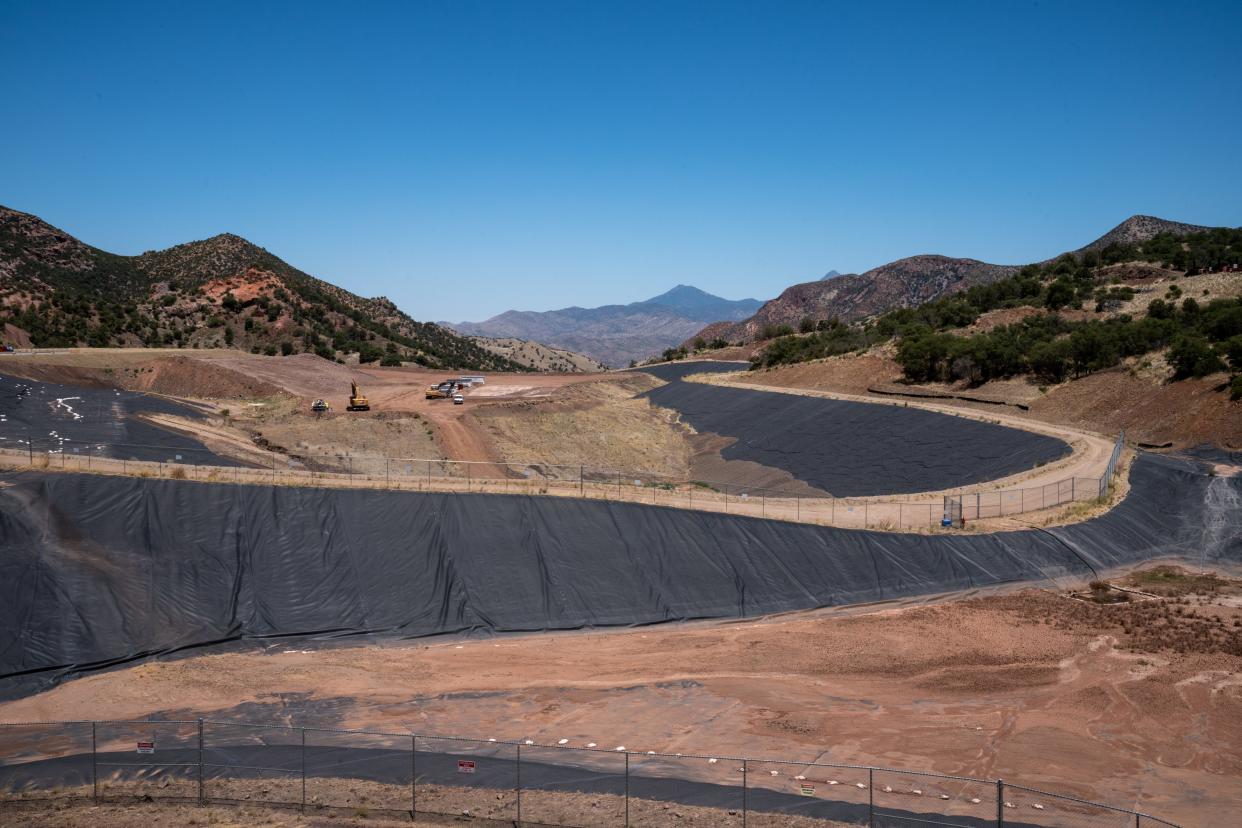
PATAGONIA — A mining revival in the mountains near this southern Arizona town could help power a growing move to mass-produce electric vehicles.
It could also land the state squarely in the divide between two environmental imperatives, one to slow climate change and the other to preserve sensitive landscapes
The district was abandoned after decades of silver and lead extraction and has become known mostly as a haven for long-traveling birds and birdwatchers. If the Australian mining company South32 succeeds in tapping rich deposits of zinc and battery-grade manganese from the area, it could soon hum as an epicenter in America’s urgent efforts to source its own minerals for a low-carbon future to fight climate change.
Alongside proposed expansions in Arizona’s nation-leading copper production, this nascent mining boom would position the state as a leader in the West’s drive to fuel the cars of the future.
It also would change a landscape that many prize as a unique biological mixing zone in forested mountain ranges like the Patagonias. Arizona’s Sky Islands form an archipelago of oases above the desert, alive with migratory birds, bats and big cats.
Company trucks rumbled over the dirt access road when The Arizona Republic visited in late May, while drill rigs bored into the earth from flattened pads in order to access, remove and treat groundwater from around the manganese ore deposit. Geologists laid out numbered core samples in an on-site storage room, ready for shipping to a lab to assess mineral densities from various locations and depths.
Amid the activity, a coati, an adaptable ring-tailed native of the southern Arizona wilds, ambled along a roadside concrete Jersey barrier.
If regulators and corporate backers approve full-scale mining as proposed, hundreds more workers will come to these mountains and truck out the ore that will supply battery factories now in development around Arizona and the West.
Manganese is a stabilizer in today’s car batteries, reducing combustibility while increasing vehicle range. It makes up 17% of lithium-ion batteries, but it could account for much more in new formulas that eliminate more socially and environmentally problematic cobalt from Africa, South32’s local project president, Pat Risner said. Much of the world's current cobalt supply is mined in toxic conditions by Congolese workers earning little pay.
Yet America does not mine or refine any manganese, while China controls most and refines nearly all of the world’s supply. The company’s proposed Hermosa Mine would produce and refine manganese in Santa Cruz County, Risner said, and its dual production of zinc would make it the only U.S. mine checking two boxes on the U.S. Geological Survey’s list of critical minerals.
Manufacturers gearing up to make batteries over the next few years want domestic supplies like Hermosa’s, the South32 executive said. The government likewise has enacted incentives, such as tax rebates for cars with components sourced in the U.S. or North America.
President Joe Biden touted the power of these and other incentives, for solar panels or home weatherization, during a speech in northern Arizona in August, saying they would cut the nation’s carbon emissions in half by 2030.
South32 is one of many prospective miners in the West in a position to capitalize on a national appetite for homegrown “green energy” minerals.
“It just creates a safer, more stable supply chain to ensure that long-term there are no disruptions,” Risner said, “which ultimately enables our nation to achieve those bold decarbonization goals.”
Like other tracts of the American West experiencing this electrifying mineral rush — Nevada for lithium, Idaho for cobalt and rare earth elements, and other ranges in Arizona and Utah for copper — the prospect comes with pitched environmental and cultural conflicts.
Around Patagonia, residents fear the destruction of their “nature-based” tourism economy, one that includes coveted sightings of long-tailed, green-and-red tropical birds, called elegant trogons, and a seasonal rainbow of hummingbird species.
Multiple copper deposits farther north could supply wire and parts needed for electrification, but also threaten sites sacred to the Tohono O’odham, Hopi, Pascua Yaqui and Apache peoples. Neighbors worry about poisoning, depleting or even flooding their waters.
A mission to find needed minerals for an energy transition
Miners and prospectors seeking other EV components in the mountains of central Idaho make a similar pitch. There, near where the nation’s only current cobalt mine awaits a rebound in prices largely controlled by the Chinese, Rob Morgan gathers core samples of rare earth elements drilled from claims on U.S. Forest Service lands and preps them for shipping to a Nevada lab for analysis.
These soft, reactive metals are prized for their applications in electronics and magnets, among other uses. He stacks them in the garage of a downtown Salmon office that his company, Idaho Strategic Resources, bought for the purpose. That office, three hours from his home in western Montana and farther still from the company’s gold mine in northern Idaho, is also where he bunks while prospecting.
As a geologist and vice president of exploration, he said he considers it his mission to locate the minerals his country will need for the energy transition, after its years of offshoring the responsibility and the environmental liabilities. Each stealth fighter jet needs 30 pounds of rare earth elements, Morgan said, and all of it currently comes from overseas.
During an interview at his office, he snacked on a bag of Idaho-fried kettle potato chips and said he wants to do for Idaho and America what the snack maker does: take a homegrown resource from the ground and supply local factories that refine it into finished products.
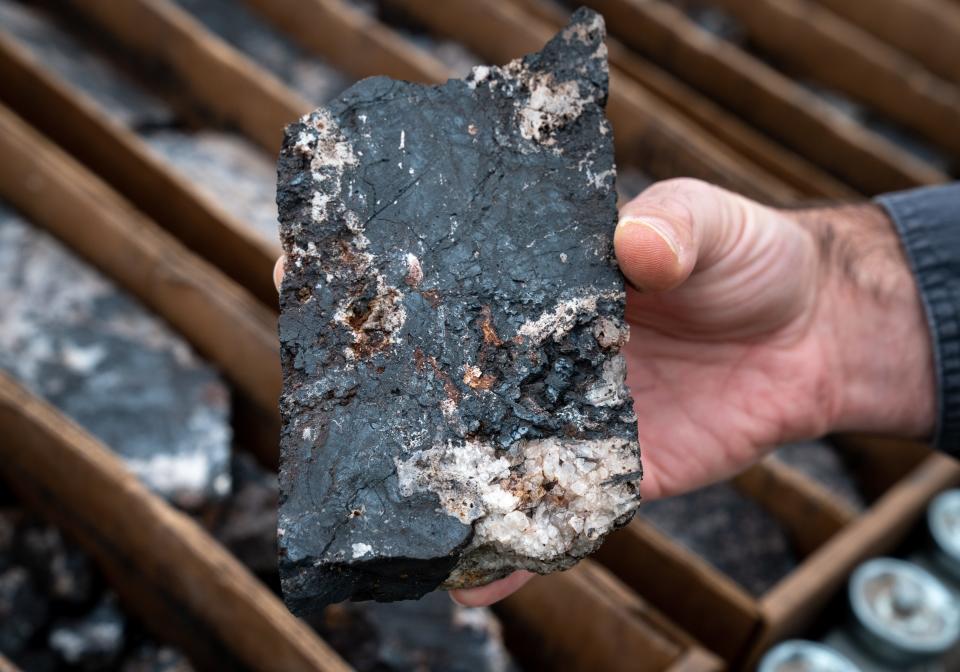
“I’m just trying to find rare earths for the U.S.,” Morgan said.
Those minerals are critical for magnet production, a mine-to-manufacture chain that he hopes will happen, locavore-style, entirely within Idaho. With scientists and engineers nearby at the U.S. Department of Energy Idaho National Laboratory in Idaho Falls, he envisions public-private partnerships that drive America’s future. It’s an ambitious vision, given that even his company’s gold ore heads overseas for refining.
“Not only do we not mine anything (in America), but we don’t smelt anything,” Morgan said. That has to change, with government support, he said, for Biden’s quest for electrification to pan out.
“How are we going to get to all these EVs if we don’t make anything?" he said. "It’s the most asinine thing.”
Critics fear a repeat of abandoned mines from years past
International corporations are “making hay” with the environmental imperative of decarbonization in hopes of extracting profits and leaving Americans to deal with the mess on the land and in the water, said Roger Featherstone, who directs the Arizona Mining Reform Coalition. His group is among several who have sued to stop or impose more safeguards on mining around Patagonia and southern Arizona.
“The mining industry has done a really good job selling the myth that we have to mine our way out of climate change,” Featherstone said, “that we have to destroy ecosystems to save ecosystems.”
Native Americans also have fought to protect sacred ground from mining. Four years ago, the Tohono O’odham, Pascua Yaqui and Hope tribes joined a successful effort to block Canadian mine company Hudbay from digging an open pit copper mine in the Santa Rita Mountains, north of Patagonia, and dumping the waste on the Coronado National Forest.
“The area contains burial sites, a village site, and sacred seeps and springs central to the tribes’ identities,” Earthjustice attorney Heidi McIntosh wrote on behalf of the tribes at the time. “This decision should stop mining companies from dumping their waste on public lands to the detriment of tribes and others who enjoy the natural beauty of these places throughout the West.”
This year, Patagonia joined a lawsuit seeking to block South32 and another company from expanding exploration that the town fears will harm its water supply. That challenge continues, although the 9th Circuit Court of Appeals in September effectively allowed exploration to start by rejecting a request for injunction.
These are common reactions in communities across the West, where residents remember the days of played-out mines that were abandoned and then poisoned local waters, and where residents place the local environment over global concerns, said energy transition expert Morgan Bazilian. He directs the Payne Institute for Public Policy at the Colorado School of Mines, and in previous roles worked as deputy director of the U.S. National Renewable Energy Laboratory and as a senior negotiator during United Nations climate talks.
“We have to grapple with the history,” Bazilian said. “There’s been bad stuff.”
Overcoming this opposition in the coming wave of electrification will require openness among corporations and governments, better engagement and partnerships with affected tribes, newer and safer mining technologies, and more profit-sharing with locals, he said.
More than climate change, Bazilian said, national and economic security will drive the mining rush. Already both political parties champion local production as a means to compete with China, which in turn has limited exports of some strategic minerals to the U.S., he said. It will challenge Americans who for decades avoided pollution by ceding mineral industry development to a country that was hungrier for it, he said. America won’t dominate these supplies, he warned, but must at least get involved in such a world-shaping movement.
That might mean federal subsidies or a premium price from the U.S. Department of Defense and other agencies for domestic supplies.
“It’s important to be in the game,” Bazilian said. “The future is unknown. If we stay out of the game, stay out of the supply chain, stay out of the markets, that’s unlikely to be a good decision.”
Turning to Patagonia’s Hermosa Mine, he said simply: “We’re going to need a lot of manganese.”
A 'transformation of the western United States'
The rush for EV materials is also driving fights over lithium deposits in Nevada. Groups like the Center for Biological Diversity are on alert as they seek to balance the environmental imperative of wringing carbon from Americans’ tailpipes with that of saving special places and species.
There’s a right way to take lithium from the ground, the Center’s Nevada program director said, but neither the Biden administration nor Congress has prioritized it over the open pits or spring-dewatering claims that old-school mining companies have rushed in to stake. They’re putting a new spin on the guiding 1872 mining law that has long incentivized western development even in sensitive places, said Patrick Donnelly, the Center’s advocate.
“It’s the same destructive mining industry, the same corrupt players using the same bad law to destroy the environment,” Donnelly said.
The 9th U.S. Circuit Court of Appeals in July rejected claims brought by environmentalists and Paiute and Shoshone tribal members against federal approval of an open-pit lithium mine at Thacker Pass in northern Nevada. Those groups had argued the mine violated federal protections for, among other things, sage grouse and a site where dozens of Paiutes were massacred, considered sacred ground.
Environmentalists sued and, also in July, won at least a reprieve in southern Nevada, where a lithium exploration company sought to drill near Ash Meadows National Wildlife Refuge, the biggest Mojave Desert oasis.
“It’s an extremely sensitive area and a special place,” said Donnelly, who lives in the same valley as Ash Meadows. The refuge is home to four endangered fish, including inch-long, metallic blue pupfish that look like pet tropical fish but live in a water-filled cavern. “We’ve been freaking out about it.”
Donnelly acknowledges the need to produce domestic lithium if the U.S. is going to speed EV development. Most lithium now comes from South America, where he said production is drying up water sources for Indigenous communities. He would prefer mining methods such as those planned for Southern California’s Imperial Valley, where geothermal energy plants would strip the mineral from waters currently in use and then reinject the water to restock the local aquifer.
Without better federal guidance on preferred mining methods, Donnelly fears the onslaught of lithium claims in the West — 122 and counting — will inflict major damage.
“This could really be a dramatic transformation of the western United States if even a fraction of this happens,” he said.
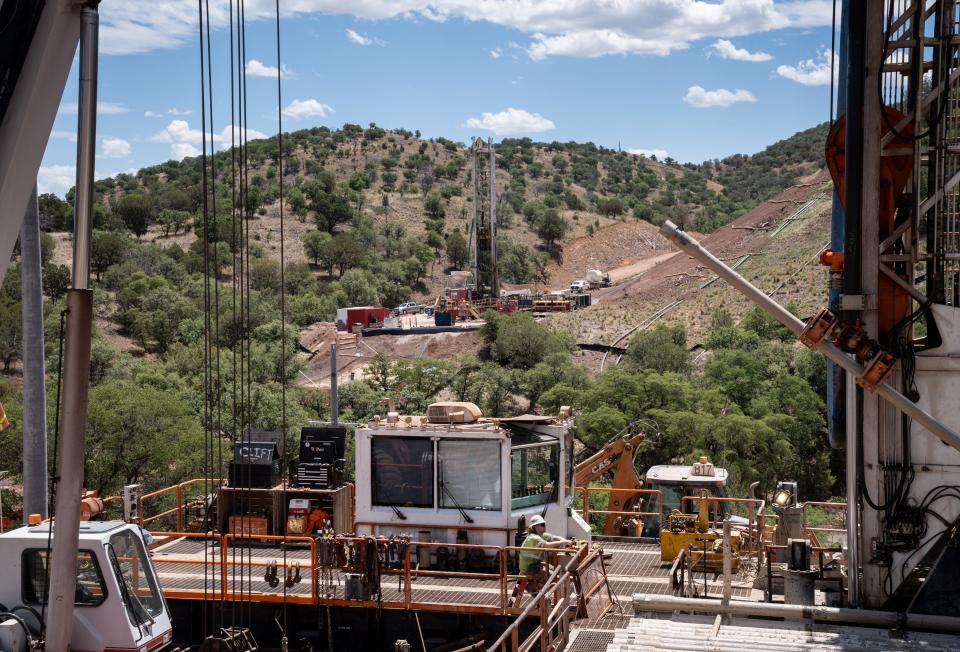
Support grows to fast-track government approval
Hermosa is the only U.S. manganese deposit whose progress toward permitting is on a timeline that could provide the mineral to battery makers who need it in the next few years, South32’s Risner said. It’s the kind of development that the Biden administration advocated and sought to incentivize through the passage of the Inflation Reduction Act and its push for electrified transport.
The trillion-dollar infrastructure law that Congress passed in 2021 also dedicates billions to invest in aiding the development of a domestic industry to refine battery materials. It may also unlock federal subsidies for copper mining prospects in Arizona and elsewhere after the administration this summer reclassified copper as a critical strategic mineral, just like manganese and others.
Both of Arizona’s U.S. senators, Democrat Mark Kelly and Independent Kyrsten Sinema, had called on the administration to reclassify copper as a critical mineral. That status already is applied to manganese, zinc, lithium and more. Adding copper would mean that, given the mineral’s expected increase in demand for electrical applications, the government would work to ensure a stable supply, in part by identifying and opening new domestic deposits.
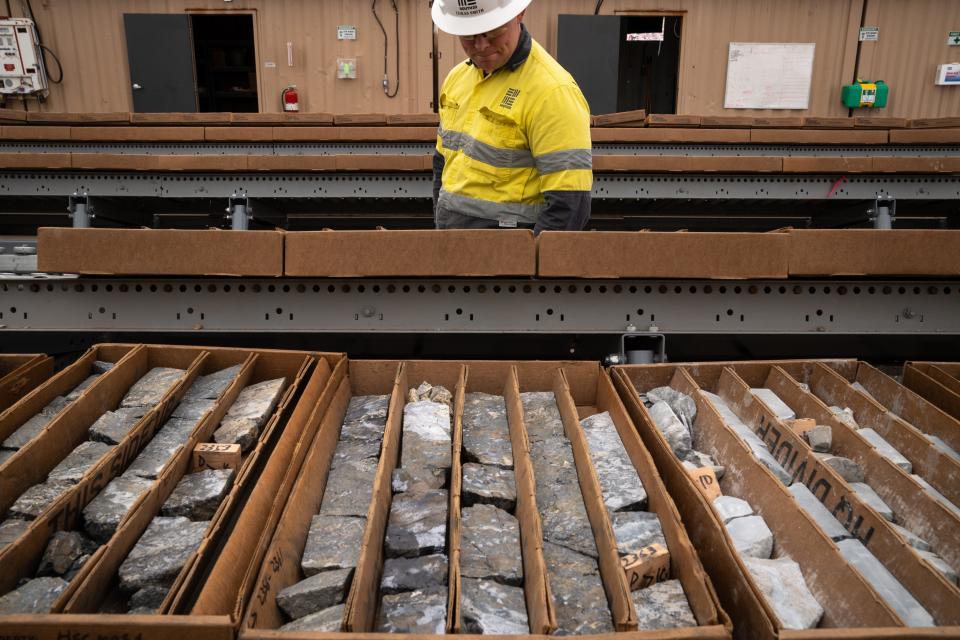
A bipartisan slate of senators joined the Arizonans in seeking copper mining’s prioritization by the Interior Department, including Mitt Romney, R-Utah; Mike Braun, R-Indiana; Joe Manchin, D-West Virginia; and Raphael Warnock, D-Georgia.
When paired with the Biden administration’s stated goal of pursuing domestic supplies for electrification, the emerging bipartisan support could aid companies seeking to tap the West’s mineral wealth. It’s why South32’s Hermosa project earlier this year became the first mine to begin review under the FAST-41 program, which streamlines federal review of important infrastructure projects by an interagency committee. That review is set to complete an environmental impact statement by 2026.
The underground mine’s area of disturbance is on 600 acres of private land patented under previous claims, but South32 needs federal permission to drill directionally under thousands of acres of Coronado National Forest lands.
Santa Cruz County, home to the Patagonia Mountains and the Hermosa Mine now under development, is poorer than most of Arizona. Its roughly 50,000 residents live primarily west of the mountains — 40,000 of them split between Rio Rico and the border city of Nogales — while some 2,000 live nearer the birding hotspots and wine-tasting tours to the east around Patagonia and Sonoita. The county’s median household income of $45,000 lags the state’s by more than $20,000, according to the U.S. Census Bureau. A fifth of its residents live in poverty.
South 32 says it will employ more than 800 people at about twice the county’s average salary when the mine is in full swing. It says some 40% of those workers will report to an off-site center, perhaps in Rio Rico or nearby on the Interstate 19 corridor, where workers can operate underground mining equipment remotely. The company also says it will process manganese off-site but within the county. The mine is projected to operate for 60 years.
“Obviously, (Hermosa Mine) mitigates risks if we were to have geopolitical challenges,” said Risner, the company’s project chief. “But the biggest issue is it creates American jobs. So it’s an American resource that can create a short, local, domestic supply chain and in doing so create jobs in a community that has been historically economically disadvantaged.”
The environment will be better off for it, too, Risner argued. As a condition imposed by Arizona regulators for taking over the site, South32 spent $30 million cleaning up old mine tailings that were leaching heavy metals into Alum Gulch on the project’s west side. The company stacked them atop liners and built a pond to capture stormwater and a treatment plant to cleanse that water.
The new mine will remove ore in large blocks between pillars, and then backfill those excavated spaces with concrete using part of the waste rock. Eventually the goal will be to cap everything and leave it in a state that won’t need perpetual water treatment, Risner said.

What happens to the water near a mine?
The company has also drilled wells to pump water out to a second treatment plant, which will release water in Harshaw Creek as it flows toward Patagonia. That process, meant to dewater the mining zone so workers and equipment can enter the mountain, worries Patagonia residents like Carolyn Shafer.
The state has permitted the company to discharge up to 10 cubic feet per second of pumped and treated water into Harshaw Creek, which flows toward Patagonia and its confluence with Sonoita Creek but is dry in its lower reaches except during monsoon floods. South32 maintains that even during a 100-year flood following a 24-hour storm, the additional water at most would raise the flow through town from 2,176 cubic feet per second to 2,186.
To Shafer, a 27-year Patagonia resident who leads a local mining watchdog group called Patagonia Area Resource Alliance, the risk is too high. People who live along Harshaw Creek already spend days at home with no ability to reach town during some monsoon storms, she said, “and that’s under normal conditions.”
During a visit to the mine site and Harshaw Creek drainage this summer, Shafer pointed out a perennial stream section that forms a wet oasis along an otherwise dry creek. Willows lined the creek bed and sycamores shaded it, while insects buzzed overhead and frogs drifted across pools.
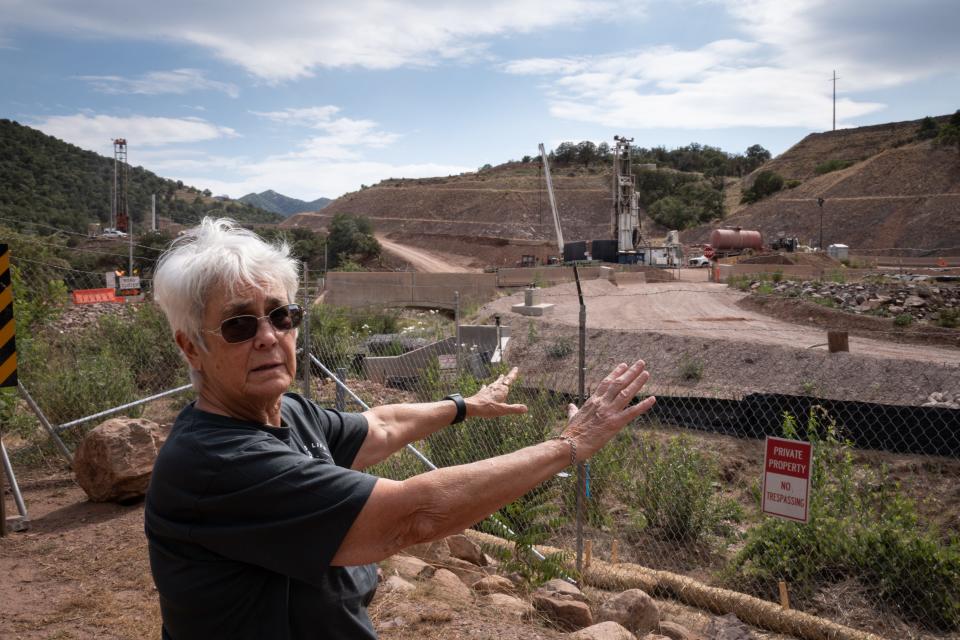
The canyon geology already forces the water to the surface there, she said, so any additional water from the treatment plant will only increase the flow instead of sinking into the sand. If the company must dewater the mine site, she said, it should reinject that water to the aquifer nearby instead of sending it downstream.
“That would be better for the environment, better for this mountain and all the wildlife and plants that live here,” she said.
While work at the Hermosa Mine awaits final permits and a corporate decision on investing nearly $2 billion, South32 and another firm, Arizona Standard, a subsidiary of Canada’s Barksdale Capital Corp., have also gained permission from the Coronado National Forest to drill test bores for silver, copper and other minerals nearby.
Shafer’s organization joined others, including the Center for Biological Diversity and Tucson Audubon Society, in suing in June, arguing that the agency has failed to consider the cumulative effects of the various mining projects on Sonoita Creek and on locally endangered species such as jaguars, ocelots, yellow-billed cuckoos and Mexican spotted owls.
Jaguars, one of the rarest of U.S. wildcats, occasionally disperse from Mexico and take up residence in the Sky Islands. One, nicknamed El Jefe (The Boss) by Tucson schoolchildren, famously roamed just north of Patagonia in the Santa Ritas for several years before turning south toward Sonora, Mexico, where he was photographed last year.
A smaller spotted cat, an ocelot nicknamed Lil’ Jefe, continued to roam the Huachuca Range east of the Patagonias as of a July 4 trail-cam sighting. A border wall segment blocks the path east of the Huachucas, making those mountains, the Patagonias, and the San Rafael Valley between them a likely conduit for these cats to enter America or return to rendezvous with Mexican cats.
The environmentalists’ lawsuit calls the Patagonias “one of the most biologically diverse mountain ranges in the United States.”
In July, the town of Patagonia filed a brief in support of the environmentalists’ lawsuit. It notes that the town adopted a resolution 11 years ago opposing any new mining or mineral exploration in the Patagonia Mountains unless safety measures are taken first, including a detailed water study and a baseline test of heavy metals in Harshaw Creek and Red Rock Canyon, which flow toward Sonoita Creek.
The watershed is the only source of potable water for 900 town residents and their neighbors who draw from 300 wells within 3 miles of town, according to the brief.
Would a mine force birds from their habitat?
The Republic made repeated unsuccessful attempts to arrange an interview with Patagonia Mayor Andrea Wood. The town’s court filings include letters she wrote to the U.S. Forest Service objecting to drilling approvals without first requiring a water study.
“Mining activities in the Patagonia Mountains have a well-documented history of water contamination problems within the Town’s Municipal Watershed,” she wrote in a letter dated Aug. 12, 2020. “Water is the one thing that all life forms can’t live without. The quality and quantity of this community’s water supply are of significant concern.”
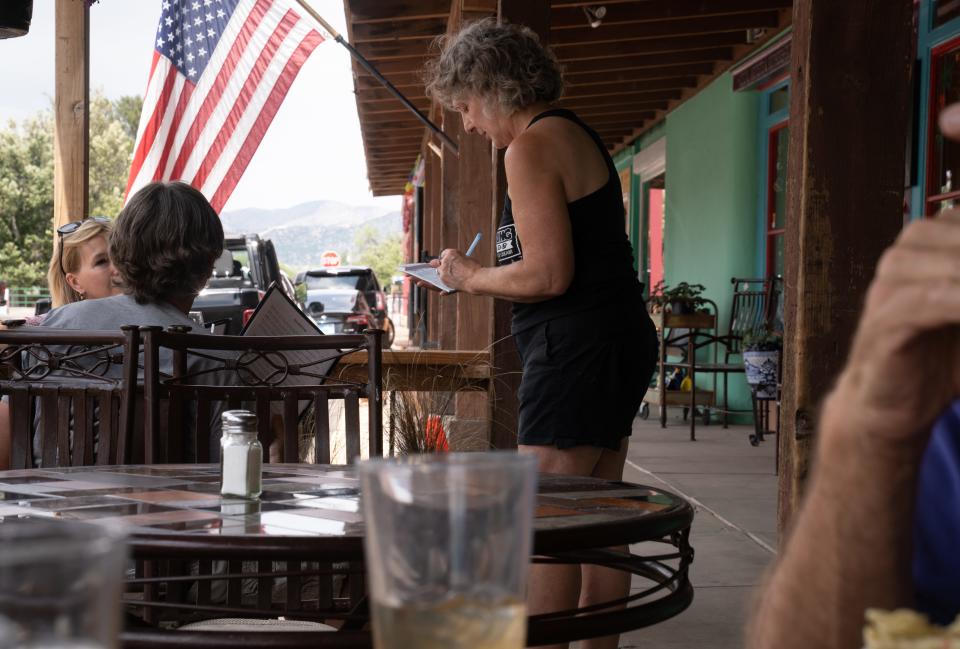
U.S. Rep. Raul Grijalva, D-Ariz., also wrote to the Forest Service, unsuccessfully requesting the study that Patagonia had sought. He noted that the Tohono O’odham people, who also sued and won a case against Hudbay’s plans to stack the proposed Rosemont Mine’s copper tailings on forest lands to the north in the Santa Rita Mountains, have likewise dealt with mining’s poison on the land and waters.
“The area has a three-centuries-long history of mining for copper, silver, and lead, which has left long-term damage,” Grijalva wrote to the forest supervisor two months after Wood did. “These mines continue to pollute the water residents need to survive with the waste left over from mining, a tragically common occurrence in mining towns, even those with no active mines.”
South32 says an already completed cleanup of abandoned tailings, coupled with its modern, dry stacking of new tailings, will leave the area’s water cleaner. Risner also said the company’s environmental protocols require mapping locations of nests of endangered species — such as spotted owls — and minimizing disturbance to them.
But even now, years before production, the mine is a hive of activity and noise. Trucks and vans come and go, and drill rigs pound.
Tucson Audubon conservation biologist Jennie MacFarland drove past the mine site without stopping this spring while leading her annual volunteer count of elegant trogons nesting in southern Arizona.
Many birders consider trogons among their most coveted sightings in the U.S., because they only extend into the country in a few southern Arizona ranges. They’re threatened by a drying climate, a fact driven home when severe drought caused the Arizona survey tally to plunge from 201 in 2020 to 68 in 2021. Two wet monsoon years led to a rebound in this year’s count, to 183, including 27 in the Patagonias.
MacFarland used to monitor a reliable trogon zone at the Hermosa site, where she or a volunteer could count on finding a pair of the colorful birds that announce their territory with a string of five “quocks.” Now, she said, a surveyor wouldn’t hear them even if she thought they were still nesting nearby. She tried once several years ago, when the company had started drilling.
“Thump-thump-thump-thump,” she said, recalling what she heard instead of trogon calls. “They used to be there. They don’t use that area so much anymore, and I think it’s the noise.”
MacFarland continued up the road during the late-May survey, driving deeper into the Patagonias, where she stopped at another reliable nesting site and immediately heard her target male responding when she played a trogon call on her smartphone. Then the male swooped overhead, sailing from oak to oak and inspecting the humans who had sounded like a rival suitor.
“They just call: ‘Hey, this is mine. Stay out, males. Come to me, females,’” MacFarland said. It makes them easy to find for those who have an idea where to search for these tree-cavity nesters, and who can use an app to replicate its call.
'This is the last stand'
It’s just one reason that Shafer said Patagonia, site of Tucson Audubon’s Paton Center for Hummingbirds, prefers to hitch its economic prospects to birding.
“This community is a world bird destination,” Shafer said.
She’s not opposed to all mining, she said. She used to mine by hand herself, picking at the rocks on a small turquoise claim she owned near town for a few years. Some of the turquoise wound up in jewelry sold to visitors at an art fair she helped found.
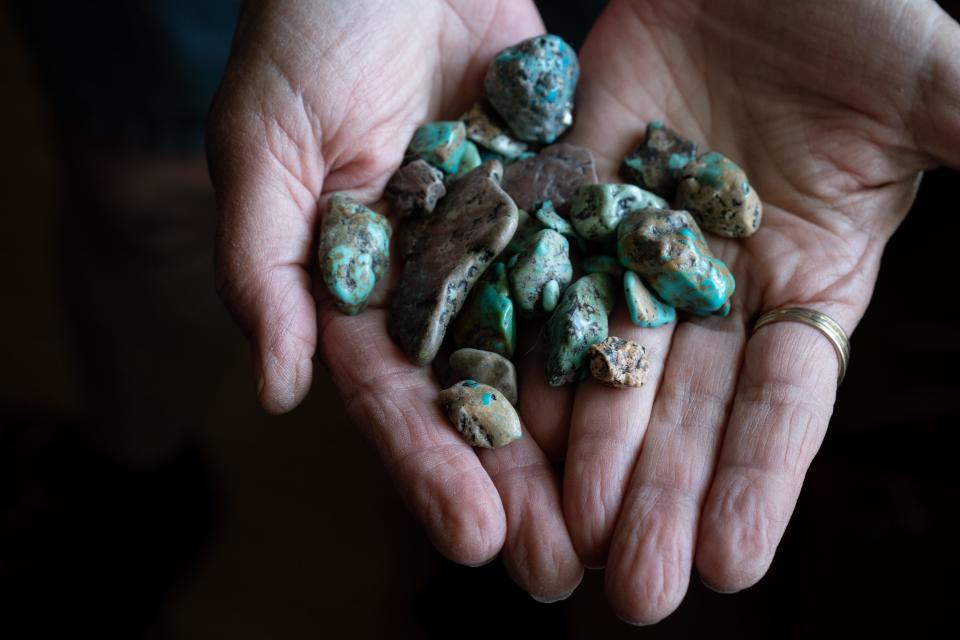
Shafer drives a Toyota Prius, a hybrid that runs partly on battery power. She doesn’t oppose mining for electrification, she said, but can’t support it locally at the expense of a globally important biodiversity zone. She’s not just trying to protect her own backyard, she insisted. Because these mountains are critical to species rare species, “this is everyone’s backyard.”
“This is the last stand,” she said.
Shafer knows that federal and state laws and politicians tend to favor mining. She’s not trying to block it entirely, she said, because she knows she can’t. Rather, she’s trying to make sure it’s done in the safest way possible, and without harming the creek or depleting the aquifer.
“Do it right, please,” she said. “Just do it right.”
One company seeking to convince skeptics that it intends to mine in an environmentally and socially sound fashion is Jervois Mining. The Australian company invested millions preparing to mine an area above a tributary to the Salmon River that had seen environmental degradation from cobalt extraction in the last century. The company paired with an environmental group, the Idaho Conservation League, to award grants worth hundreds of thousands of dollars for stream restoration projects. Then the site went dormant last winter when cobalt prices dropped.
At a mining industry roundtable in April in the small mountain town of Challis, Idaho, Jervois’ Idaho mining executive Matt Lengerich told colleagues and a consulting economist from the Colorado School of Mines that the government should help American producers.
“That’s what they do in agriculture,” he said. “How do you protect farmers? You have a price floor.”
The Colorado economist, Roderick Eggert, told the group that U.S. governing philosophy on such market interventions shifted dramatically in the last several years, moving from support of free markets and globalization to direct support for domestic industry.
Both the Trump and Biden administrations have supported expanding the scope of Defense Production Act subsidies from rare earths to a wider range of strategic minerals, he said. The Biden administration has also supported technological manufacturing such as computer chip makers in metro Phoenix.
In June, the Department of Defense, citing the Defense Production Act, announced $15 million in support for Jervois’ continued Idaho drilling and deposit analysis operations. The department noted cobalt’s utility in military munitions, high-temperature aerospace alloys and military and commercial batteries. It also noted U.S. dependence on foreign suppliers.
Congress also needs to reform federal mining law to ease permitting, Lengerich told colleagues at the Challis roundtable. He noted that there’s some bipartisan backing of a bill by Sen. Catherine Cortez Masto, D-Nevada. Sinema has cosponsored the bill, which would clarify that mining companies can store waste rock on public lands that don’t qualify as mineral claims. That was a sticking point in court when Hudbay Minerals sought to open its Rosemont Mine and dump the tailings on nearby Forest Service land.
The bill has evoked significant opposition from environmental groups, including the Arizona Mining Reform Coalition and the Center for Biological Diversity. But Lengerich said this is potentially a “once-in-a-lifetime chance” at permitting reform because many environmentalists understand the urgency of weaning American drivers off of gasoline engines.
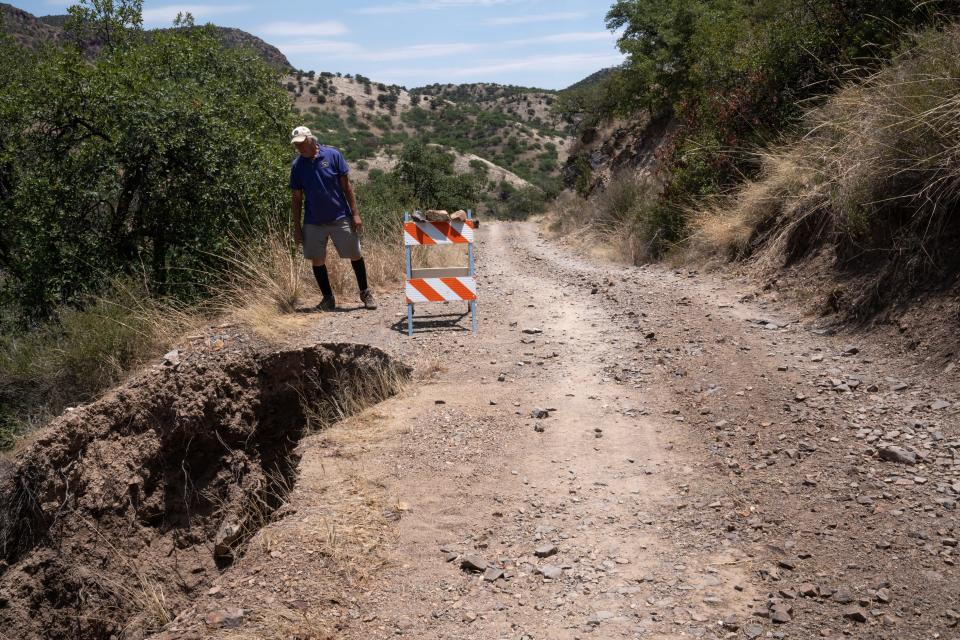
Can environmentalists and mining interests agree?
The mining boom that may lie in Salmon’s future, said Morgan, the Idaho rare earth elements prospector, will be cleaner than the one that spoiled streams that once nurtured the salmon and steelhead swimming up through the Columbia, Snake and Salmon rivers.
The old Blackbird Mine, originating in the 1890s and operating intermittently until the 1960s, created acid mine drainage and leached heavy metals including cobalt, copper and arsenic. The poison eliminated a run of chinook salmon from Panther Creek, a waterway that is only now recovering. The U.S. Environmental Protection Agency continues to remediate the mess in a designated Superfund site.
That pollution occurred before the EPA existed, Morgan said.
“Mining then and mining now are absolutely different things. There was no regulation in the 1930s.” Nowadays, he said, environmental disasters risk tanking a mining corporation’s stock.
Miners necessarily will play a role in cleaning the atmosphere, Morgan said, because electric vehicles require far more minerals than gas-powered vehicles. He said he hopes that reality is enough to build a new alliance of environmentalists and industrialists to ease resistance to his work on American soil.
“I’m tired of being the bad guy,” he said.
Those who worry about the particular mountains, rivers and aquifers that would fuel the energy transition will need more convincing.
Featherstone, the Arizona Mining Reform Coalition leader, said mining needs more regulation, not less. Communities need more protection from companies that seek to deplete aquifers for mineral production, he said. They need protections for environmentally and culturally sensitive zones, and they need a fairer return on the publicly owned minerals that enrich foreign companies like South32 or Hudbay.
“The goal is to make sure that if mining occurs in Arizona that it’s a net benefit to our environment and our communities,” Featherstone said. “We’re not anti-mining. We’re anti-stupidity.”
Brandon Loomis covers environmental and climate issues for The Arizona Republic and azcentral.com. Reach him at brandon.loomis@arizonarepublic.com or follow him on X, formerly Twitter, @brandonloomis.
Environmental coverage on azcentral.com and in The Arizona Republic is supported by a grant from the Nina Mason Pulliam Charitable Trust. Subscribe to our weekly newsletter here and follow The Republic's environmental reporting team at environment.azcentral.com and @azcenvironment on Facebook, Twitter and Instagram.
Subscribe to AZ Climate, The Republic's weekly environment and climate newsletter. Sign up here.
You can support environmental journalism in Arizona by subscribing to azcentral.com today.
This article originally appeared on Arizona Republic: Electric car batteries need minerals. Will America mine its own?

